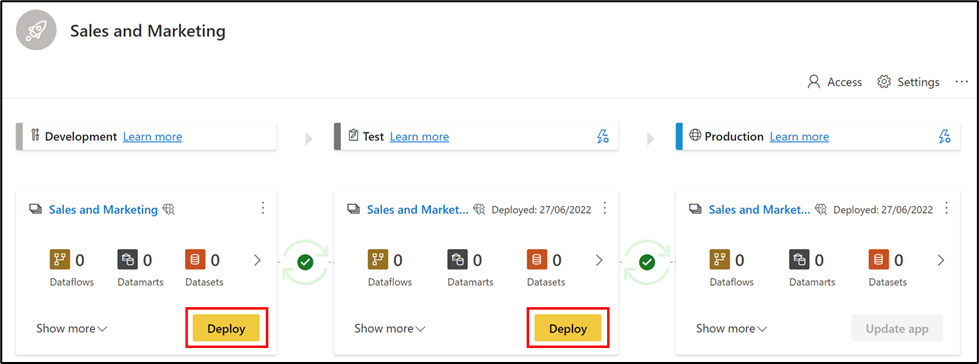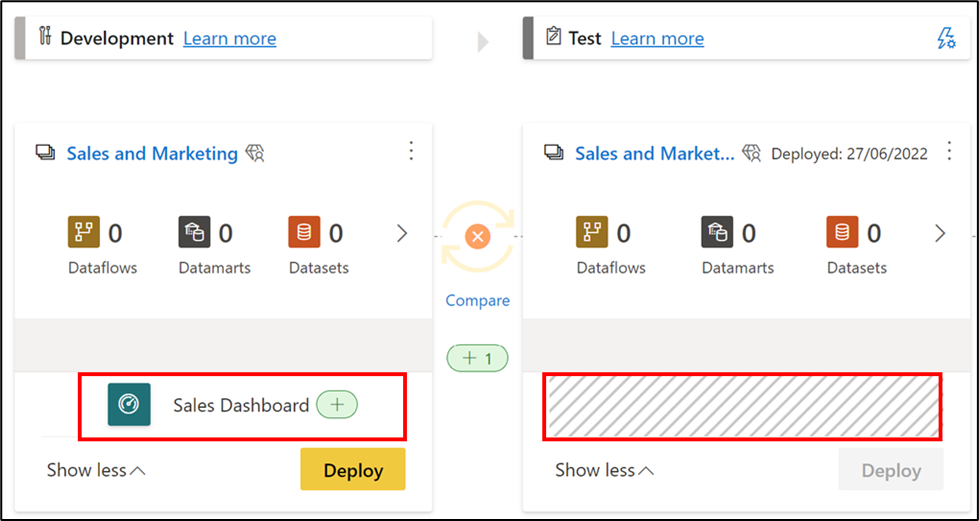Deploy content
The deployment process lets you clone content from one stage in the pipeline to another, typically from development to test, and from test to production.
During deployment, Power BI copies the content from the current stage, into the target one. The connections between the copied items are kept during the copy process. When deploying content to an empty stage, the relationships between the items are kept. For example, a report that is bound to a semantic model in the source stage, will be cloned alongside its semantic model, and the clones will be similarly bound in the target workspace.
Power BI also applies the configured deployment rules to the updated content in the target stage – we’ll learn more about deployment rules in the next unit. Deploying content may take a while, depending on the number of items being deployed.
Deploy all content to a stage
Select the stage to deploy from and then select the deployment button. The deployment process will copy all of the workspace content into the target stage. This workspace includes all the content existing in the current stage.
Selective deployment
To deploy only specific items, select the Show more link, and then select the items you wish to deploy. When clicking the deploy button, only the selected items are deployed to the next stage.
Since dashboards, reports, semantic models, and dataflows are related and have dependencies, you can use the select related button to check all items that those items are dependent on. For example, if you want to deploy a report to the next stage, clicking the select related button will mark the semantic model that the report is connected to, so that both will be deployed at once and the report will not break.
Note
- You can't deploy a Power BI item to the next stage if the items it's dependent on don't exist in the stage you are deploying to. For example, deploying a report without its semantic model will fail, unless the semantic model already exists in the target stage.
- You might get unexpected results if you choose to deploy a Power BI item without the item it's dependent on. This can happen when a semantic model or a dataflow in the target stage has changed and is no longer identical to the one in the stage you're deploying from.

